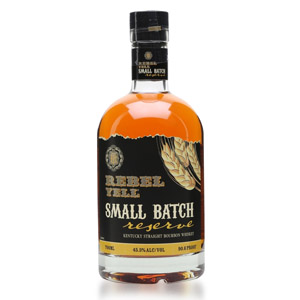Writing about Barrell is weird for me. From a costs perspective, there’s very little difference between a cask strength bourbon from a major producer like Barton that sells for $45 and something like Barrell Batch 017 which sells for upwards of $90. They’re both not super-old… most bourbons aren’t much older than 9 or 10 years, as the wide temperature swings in rickhouses where bourbons are aged tends to make them overly woody tasting much after 10 years. There’s no difference in the input ingredients, the process of distillation, the cost of the new charred barrels, or the taxes.
Even the cost of finishing barrels for things like Barrell Seagrass doesn’t explain the nearly doubled price on the shelf. At the end of the day, Barrell whiskey just tastes like it should cost $90, and so it does. And, totally out of character for me, I’m OK with that. After all, paying for quality rather than paying for brand marketing and name recognition is why I embarked on this “taste all the things” journey 12 years ago. All of this brings us to why I’m reviewing Barrell Dovetail, after walking past dozens of new-to-me bottles seriously-why-are-there-so-many-new-brands on the shelf that are cheaper.
For the sake of review, Barrell is an independent bottler and blender in the same vein as the score of scotch independents that put out large amounts of mostly single barrel whiskies, except Barrell does this for American bourbons and ryes and is mostly known for their blends.
Dovetail, poetic carpentry allusion aside, is a blend of two sourced bourbons: A 10 year-old Indiana (I assume that means MGP) bourbon finished in Dunn Vineyards Cabernet wine barrels (French Oak), and an 11 year-old Tennessee whiskey (could be Dickel, could be Nelson’s Green Brier, could be some small craft distillery…) finished in both blackstrap molasses rum casks and LBV aka Late Bottled Vintage aka sweeter port pipes. The result is bottled at cask strength of (in my bottle) 61.27%. My bottle’s label says it was #19,492. Assume 260 bottles per barrel, and we’re looking at around 75 barrels’ worth of whiskey before they arrived at my bottle. That’s a big batch (or, more likely, batches).
My first, cynical, jaded, reaction to this was “What?! It’s just a blend of TWO whiskies?!” but then my more rational self took over and I imagined Barrell blenders parceling those two sourced whiskeys into three different finishing casks and then pulling them when they achieved sufficient flavor from each. That’s a lot of variables: 2 whiskies, times 3 finishing casks, times a variable number of months to get the right flavor out of rum, port, and wine casks. They claim it took almost a year of blending to get right, and now I can see why. Imagine all the other finishes and, possibly, sourced whiskies they rejected along the way.
I got a good deal, in hindsight, at Costco in 2022 when they were carrying it for $70 a bottle, but expect to pay closer to $80 now.
Nose: Grape jelly and grape Jolly Ranchers. The grape notes dissipate quickly, revealing deeply sweet layers of butterscotch, caramel, bananas foster, and molasses. I can barely tell that this is bourbon underneath all of the desserts.
Palate: Syrupy body. After a roaring tongue burn, the grape-candy notes reappear, along with the same litany of sweets and desserts from the aroma.
Finish: Medium-long. Continues to be sweet, but now with scattered notes of black pepper, lump charcoal, and scorched nuts. Fades without evolving.
With Water: Several drops of water have no apparent effect on the aroma. The tongue burn is a little less rough, and carries more red wine tannins. The finish is also fruitier. Try this without, and then with water, especially if you find the ABV a bit high.
Overall: Well, it’s not as knock-your-socks-off good as Barrell Seagrass, alas. It’s a fully-flavored bourbon with a hearty helping of dessert notes from the array of barrels finishes. I’m surprised that the fruit notes are limited to a few grape candies and a bit of baked banana. It’s tasty, it’s robust and carries big flavor, but it’s not a game changer. I’d say it’s worth the hefty price tag, but don’t expect Seagrass-level brilliance.
Consider this “Recommended with Reservations” aka “Buy Seagrass instead.” Yes, I know one is a bourbon and one is a rye, but the point stands.









I bought a bottle of Barrell Seagrass. Pretty decent but didn’t blow my mind as it did yours. Then I was introduced to Angel’s Envy Rye finished in rum casks. Mind successfully blown! That’s a beautiful whiskey, and I don’t even enjoy Angel’s Envy bourbon.